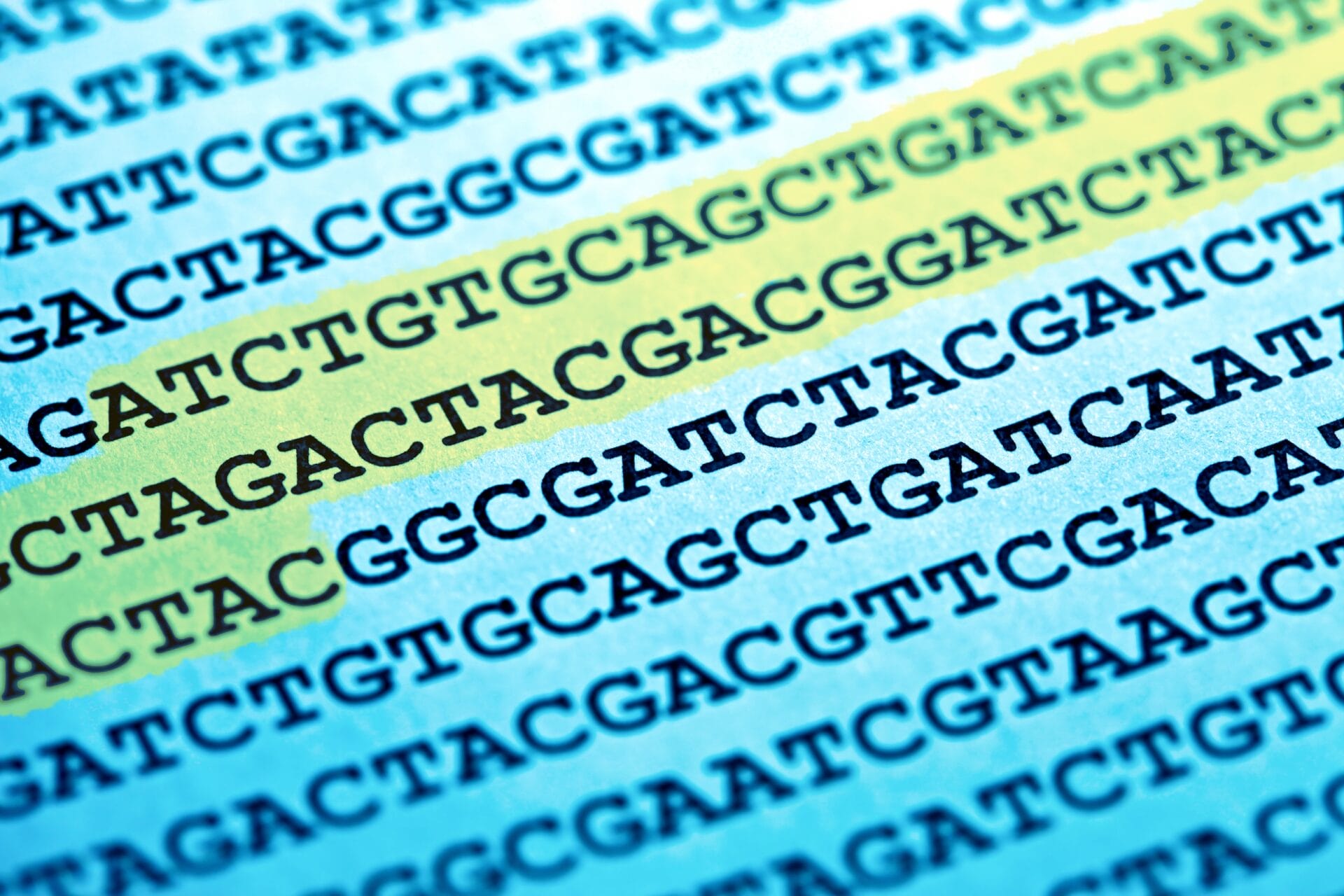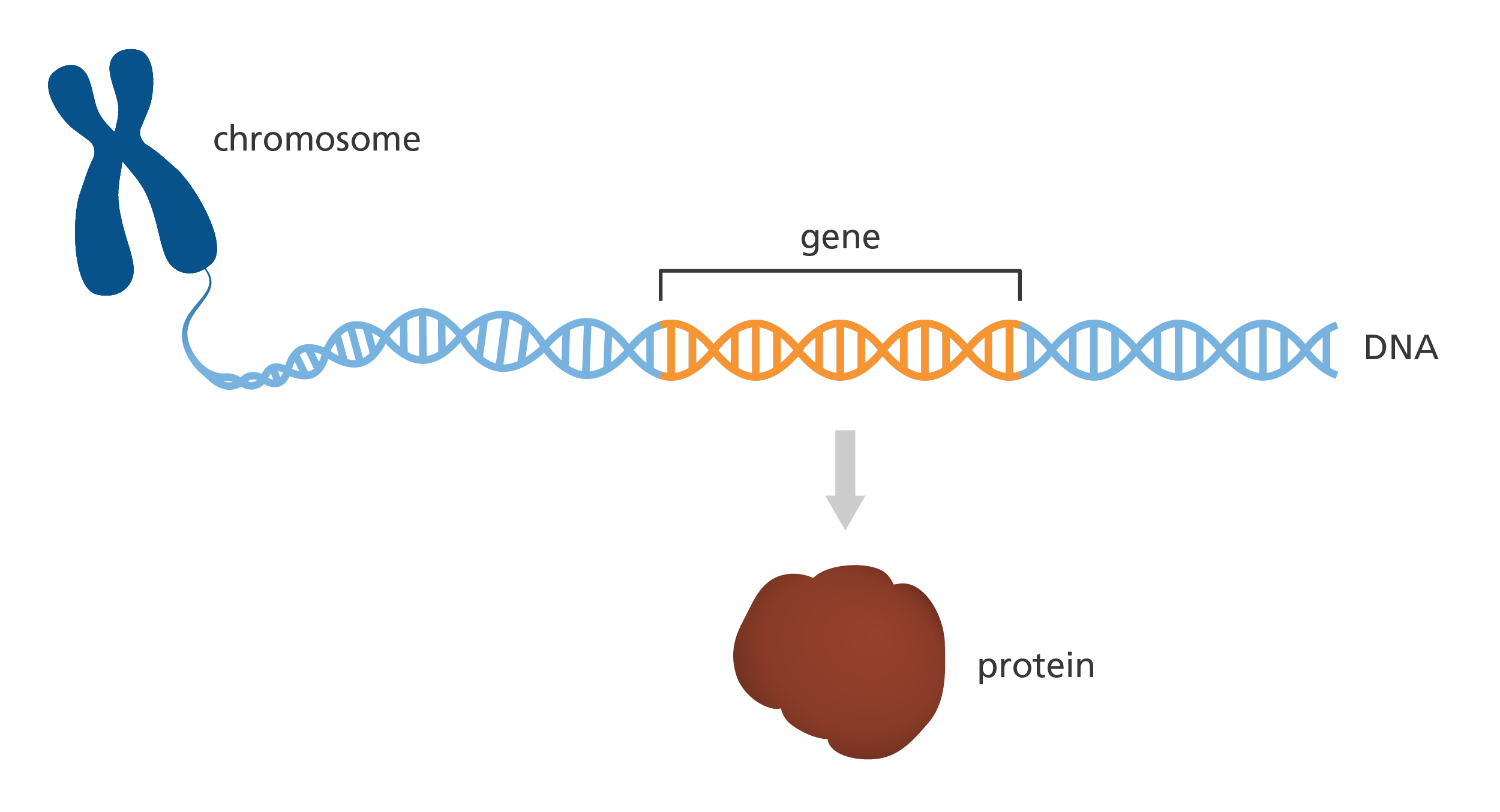What is a gene?

Genes are small sections of DNA that code for a functional product, like a protein.
- Our DNA is organised into small sections, called genes.
- Each gene contains the instructions for making a specific product – usually a protein.
- Our proteins serve many functions to keep our cells functioning, such as protecting against disease or absorbing nutrients from food.
What is a gene?
- Our DNA stores the information our bodies need to function.
- The DNA is organised into sections called genes.
- Each gene contains the instructions a cell needs to make a specific molecule – usually a protein.
- Proteins do nearly all the tasks that keep our cells operating and our bodies alive.
- Variations in our genes and their encoded proteins also affect our individual characteristics – such as eye and hair colour. Some characteristics – like height – are affected by both our genes and our environment.
- The human genome contains approximately 20,600 protein-coding genes. Other organisms have different numbers of genes.

Illustration showing a section of DNA code that gives instructions for making a protein. Image credit: Laura Olivares Boldú / Wellcome Connecting Science
How do our genes affect our characteristics?
- Genes come in different forms, or variants, known as ‘alleles’ (pronounced “ah-lee-els”).
- As humans, each of our genes comes as a pair – meaning we have two alleles for each gene. The combination of our alleles determines some of our physical characteristics.
- Scientists used to think that some of our characteristics, like our eye colour, were controlled by one single gene. However, we now know that eye colour is controlled by at least eight different genes.
- Of these genes, different alleles in a gene that codes for a pigment, called melanin, can affect eye colour:
- If a person has two identical ‘high pigment’ alleles, they may have dark brown eyes.
- If they have two identical ‘low pigment’ alleles, they may have blue eyes.
- If they have two different alleles – such as one ‘high’ and one ‘low’ pigment allele – they might have light brown, green or hazel eyes.